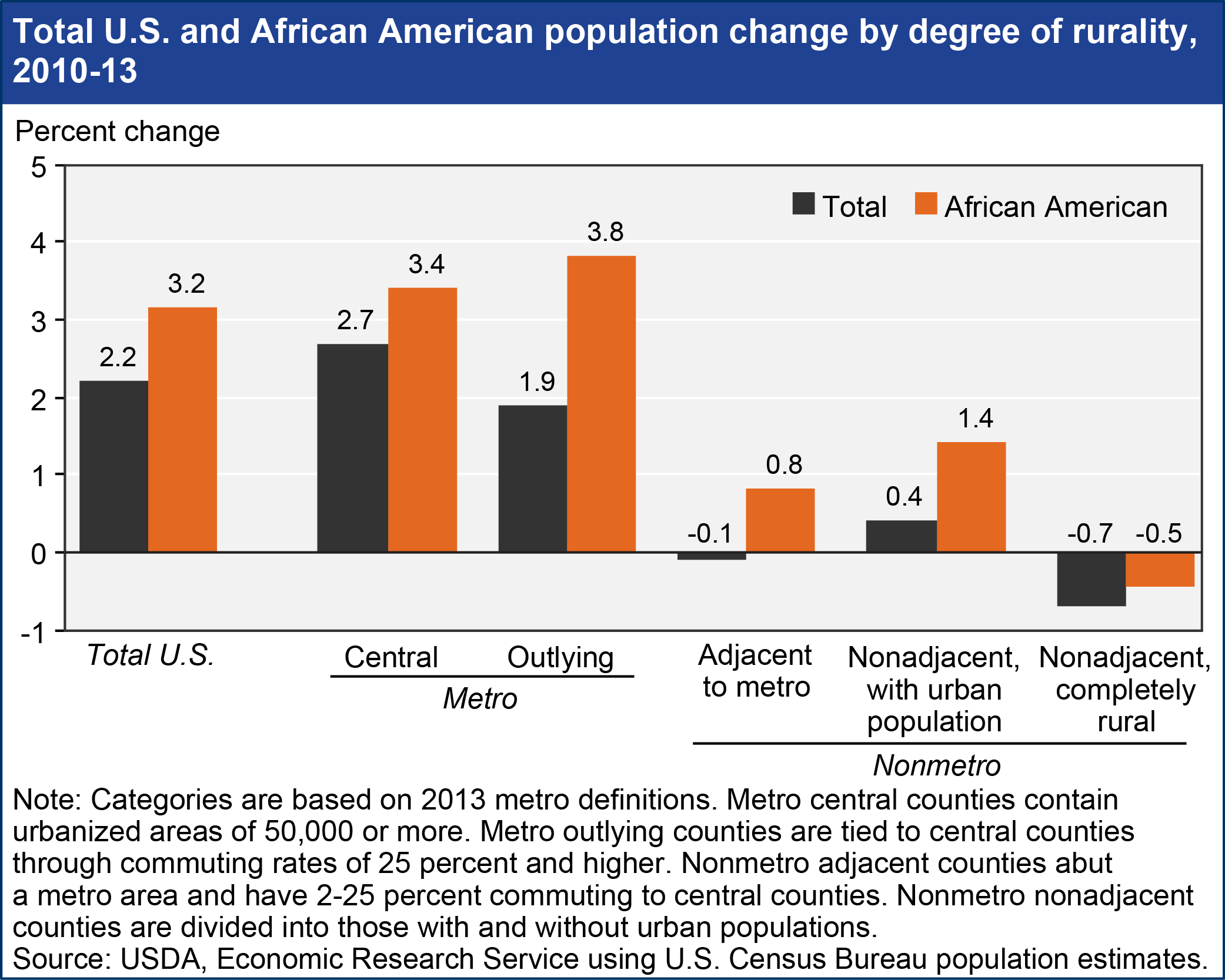African American population growth rates higher than U.S. average
- by John Cromartie
- 2/25/2015

The estimated 42 million African Americans living in the United States in 2013 made up close to 13 percent of the population. During a post-recession population slowdown in the United States, African Americans have continued to experience relatively high rates of population growth, the result of higher fertility rates and a younger average population. Population estimates from the U.S. Census Bureau show gains among African Americans in all urban/rural county types except for the most sparsely-settled and remote areas (nonadjacent rural) during 2010-13. For the total population, suburbanization trends in the U.S. slowed markedly with the onset of the housing crisis and recession. Suburban fringe counties (metro outlying) now show slower rates of growth than the central cities of metro areas, although the African American population growth rate has not yet experienced this historic shift. Similarly, the African American population continues to show gains in those nonmetro counties most likely to be suburbanizing (nonmetro adjacent) at a time when those counties show overall population declines. This chart expands on one found in Shifting Geography of Population Change, a chapter in the ERS website topic page on Rural Population and Migration.

